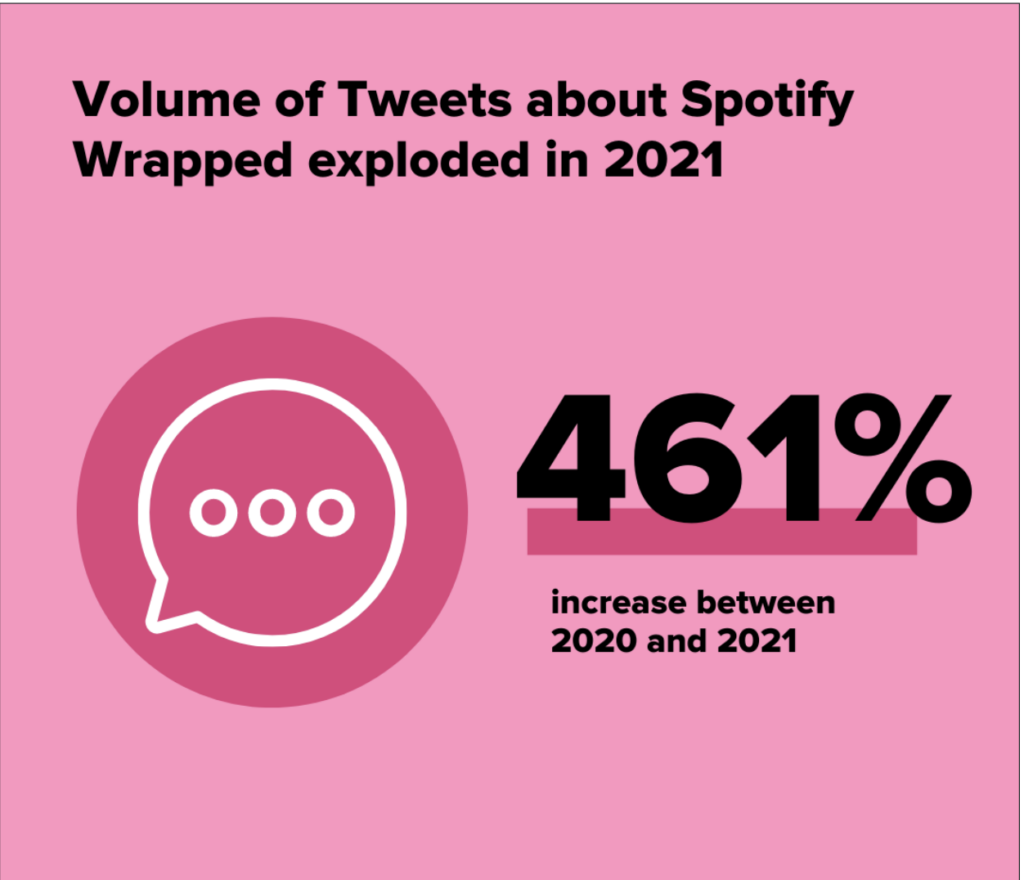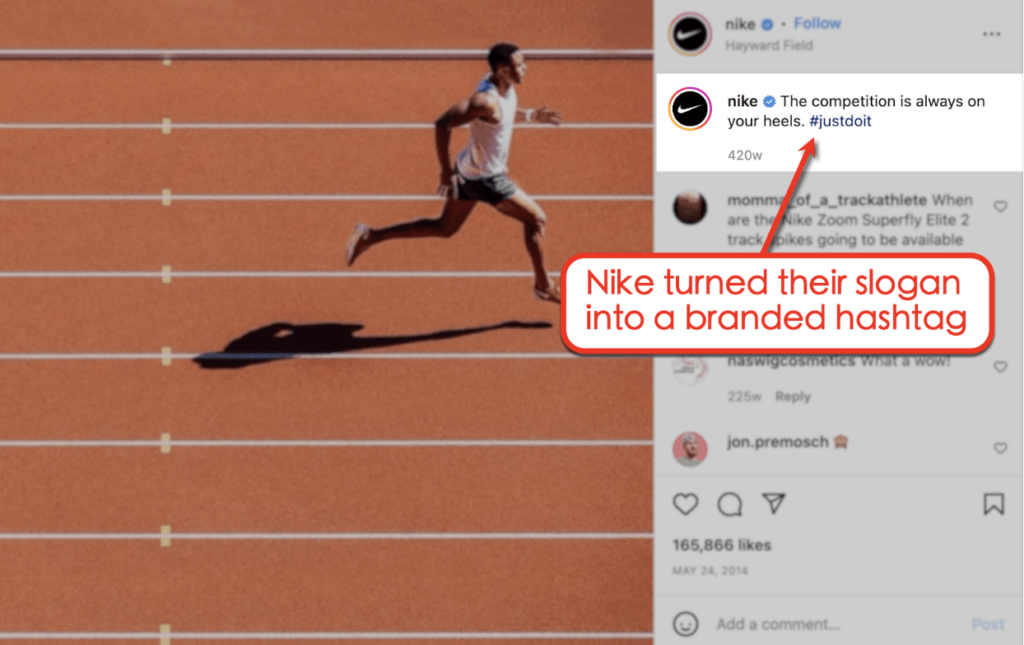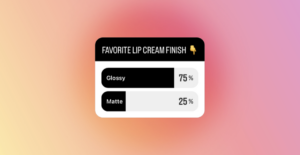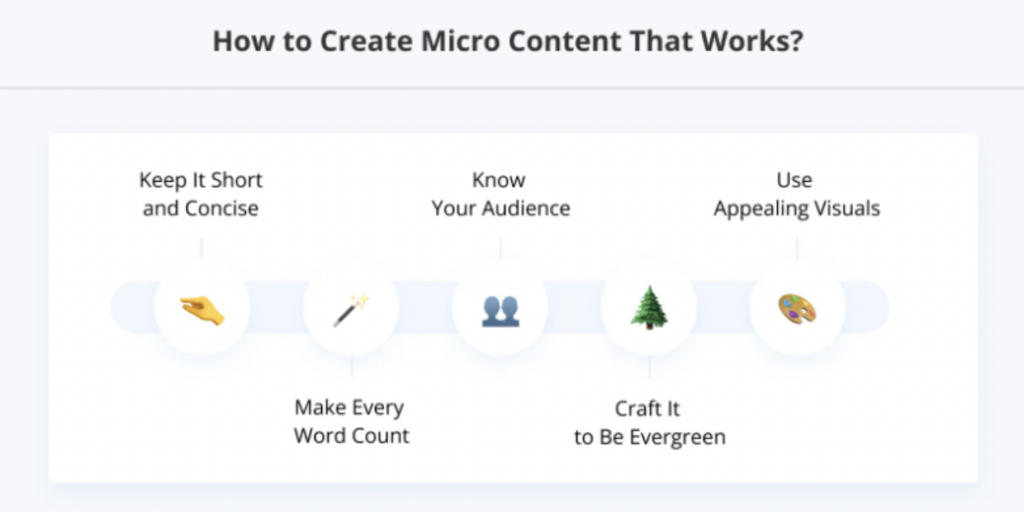You know that electrifying moment when something grabs your attention and you just have to click? That’s the magic of micro-content. Compact, yet explosive; brief, but unforgettable. In today’s digital jungle, where distractions are countless, micro-content — be it a catchy headline, compelling imagery, or strategic short links — serves as your brand’s sizzling secret weapon.
Trust us, it’s not about being the loudest, it’s about being the most captivating. Dive in, and discover the unparalleled power of micro-content. With these insights, your social media content won’t just be a blip on the screen; it’ll stick in people’s minds.
Micro-content provides short, clear, and informational content. Instead of a long blog post, it provides the main points in a simple, easy-to-grasp way. When there’s content with every scroll on social platforms, you need something that pops. Micro-content does just that so that your message isn’t lost in the crowd. Here are the popular types:
- Quizzes
- Infographics
- Micro videos
- Engaging GIFs
- Interactive polls
- Short video clips
- Memorable quotes
- Compelling social media posts
- Catchy headlines (email subject lines can use this principle too)
Consider Spotify’s Wrapped campaign. Year-end summaries aren’t new, but their campaign redefined them. Rather than using larger pieces like a detailed song list, Spotify offered users bite-sized content that recounted their year in audio content.
But it wasn’t just about listening habits. Through shareable cards and stats, Spotify made each user’s musical journey a shareable micro-content moment.
The result? A yearly cultural event where millions excitedly share their musical recap, turning each Spotify user into a brand ambassador.
Micro-content is efficient and impactful. Whether it’s micro-content videos that convey a message in a few seconds or a compelling infographic that condenses a 1000-word article, the possibilities are endless.
Consider tweets that start trends, headlines you click on, or short-form videos you instantly share. That’s micro-content at work, making complex ideas easy to digest. P
So, why should you dive into creating micro-content? Could it be the game-changer in boosting your brand’s visibility and engagement on social media platforms? Let’s find out.
5 Reasons Why You Should Create Micro-Content
Today’s digital landscape is crowded. Every brand, influencer, and even your cousin Steve wants a part in the spotlight. With so many options, how do you make sure your brand is on the user’s mind when making purchase decisions?
Consider this: when planning a trip, would you want to learn how to use Google Flights in a 500-word blog post, or would you rather rely on personal recommendations to snag the best deals?
Now, while there’s value in detailed content guides, blending them with micro-content can make your content strategy sing. Wondering why? Here are 5 compelling reasons to make micro-content a star player in your content marketing playbook:
I. Immediate Engagement
Micro-content grabs attention. When you have just a few seconds to make an impression, a well-placed GIF or a snappy social post can make all the difference. It’s like a digital firm handshake or a witty one-liner at a party.
II. Optimized For Mobile
- Designed for small screens: Whether it’s a concise infographic or a 15-second video, it fits perfectly on mobile screens, making the user experience seamless.
- Quick load times: With the majority accessing content via mobile devices, micro-content loads fast.
III. Boosts Shareability
People love sharing stuff. Micro-content, being bite-sized, is often easy to share. Think back to the time you shared a meme, a poll, or a catchy tweet because it’s direct and relatable, users want this content type in their feeds.
IV. Fits Modern Consumption Habits
Today’s users often multitask. They could be watching TV, reading blog articles, and scrolling through social media all at the same time. Micro-content fits this rapid consumption style. It delivers value without demanding too much time or focus.
V. Enhances Brand Recall
It’s one thing to see content; it’s another to remember it. With its succinct and potent nature, evergreen micro-content often leaves a lasting impression. The next time users think about your product or service, that memorable micro-content piece will position your brand on the top.
Consider Nike. While they have in-depth content in their blog and extensive advertising campaigns, it’s often their easily consumable content, like Instagram Reels, that sticks.
Now, imagine scrolling through social media and coming across a 10-second athlete video clip, drenched in sweat, tying their Nike shoes with the caption “Just Do It.” No extensive storyline, no complex visuals, just a straightforward message that reinforces the brand’s core value.
A few days later, when you’re considering purchasing new athletic wear or shoes, that tagline and the associated drive will pop into your mind. Even if you saw multiple ads from various brands, this brief yet impactful micro-content from Nike stands out, making you more likely to think about them first.
This phenomenon isn’t just restricted to big brands like Nike. Even smaller brands can harness micro-content’s power to enhance recall. The key is creating content that resonates, sticks, and aptly represents the brand’s essence.
The result?
- More shares
- Increases shareability
- Drives brand recognition
- Cultivates a loyal community
- Drives immediate engagement
- Builds a robust online presence
- Delivers higher engagement rates
- More vibrant and engaged audience
The logical next step is to see it in action. Curious about how top brands leverage this? Let’s dive into some standout examples you can use on your digital channels.
8 Micro Content Examples You Can Leverage
Have you ever scrolled through Instagram and quickly voted on a “this or that” poll? That’s micro-content in action. Imagine you’re a brand that sells sneakers. One day you ask, “High-tops or low-tops for our next release?” Not only are you making folks feel involved, but you’re also sneaking in market research.
Plus, the instant feedback helps in making quicker decisions for product launches. It’s like having an ongoing focus group right on social media. Win-win, right?
So, a simple poll? It’s not just fun. It’s clever marketing in disguise, giving you a deeper connection, insights, and a loyal crowd, all in a few taps.
2. Quick Hacks
People adore life hacks. Demonstrating an easier way to tackle everyday challenges? Priceless. Let’s talk garlic. Ever thought a bulb could be peeled in mere seconds? If you’re in the kitchen gadget game, showcasing this on TikTok isn’t just a product plug. It’s a solution to a common kitchen frustration. The result? Viewers are hooked and possibly itching to click on “purchase”.
3. Flash Quizzes
“Which superhero are you?” quizzes were the rage, and they still work. For brands, this can be gold. Consider a cosmetic line asking, “Which lipstick shade matches your personality?” Before you know it, you’ve got a product recommendation that feels personal and fun.
4. Memorable Quotes
Quotes hit differently. If you’re a bookstore, throw in a beautiful quote from a bestseller. It’s shareable, comment-worthy, and a gentle nudge saying, “Hey, we’ve got this book.”
If you’re looking to capitalize on seasonal content, quotes or sayings related to specific occasions can be particularly effective. For example, with Halloween around the corner, you can utilize catchy Halloween sayings to engage your audience, making your content timely, relevant, and memorable.
5. Infographic Snippets
Facts and figures can be boring unless they’re jazzed up. A fitness brand dropping a fun fact like, “Did you know? Dancing for 20 minutes burns off a chocolate bar!” can get people moving and get them to check out your dance workout series.
When talking about visuals, visual content, and creative visual advertising are paramount to captivate your audience. For fresh inspiration on leveraging visuals in your advertising strategy, explore these 13 creative ideas for promoting your business with visuals from JumpStory.
6. Countdowns Or Teasers
Everyone loves a good teaser. Launching a new product? Share tiny sneak peeks leading up to the big day. It keeps everyone on their toes and your brand on their mind.
7. User-Generated Content (UGC) Highlights
Real people making real progress. Imagine watching amateur baseball players improve their batting precision and agility using pitching machine balls. It’s not just about showcasing a product but the transformation and benefits it brings.
When potential customers see others enhancing their skills with these products, they’ll feel compelled to purchase too.
8. Challenges Or Hashtag Movements
Remember the Ice Bucket Challenge? Viral, impactful, unforgettable. If you can kick off a fun challenge related to your brand, the engagement can be huge. Plus, it creates a memorable community for your participants.
Micro-content, in essence, lies in its versatility, as showcased in these examples. But how do you whip up these bite-sized yet powerful pieces for your brand?
How To Create Micro-Content?
Ready to craft your spellbinding micro-content? Let’s dive into creating standout bite-sized content that resonates and engages with these 5 simple steps.
A. Understand Your Audience
The first step to creating any content, micro or not, is understanding who it’s for. Dive deep into your target audience’s preferences, behaviors, and pain points.
- Engagement: Responding to comments and discussions can give you more insight and foster a connection with your followers.
- Trends & analytics: Regularly check platform analytics to see which posts have the most engagement. Use tools like HelloTrace, which specializes in audience analytics and insights. Along with various social media platforms, it gives you a view of what your audience is craving.
B. Choose The Right Platform
Different platforms cater to different demographics and content types. Determine where your audience spends the most time and the content type they consume there.
- Adaptability: Remember, micro-content is versatile. You might need to tweak the same content piece to fit different platforms. For instance, a quote that goes on Twitter might turn into a visual post on Instagram.
- Platform research: If your audience enjoys quick how-to videos, go for TikTok or Instagram. However, if your content leans more on sharing industry news and engaging with professionals, go for LinkedIn or Twitter.”
C. Craft A Clear Message
Micro doesn’t mean vague. With fewer words or shorter videos, every element should carry weight and contribute to the message.
For instance, if you’re trying to persuade your audience about eco-friendly energy sources’ value, embedding a link to complete solar power kits within an engaging infographic can make your message more compelling. The idea is to integrate products or services seamlessly into the content narrative.
- Be direct: Avoid jargon or overly complex ideas. Clarity is key.
- Visual appeal: With visual micro-content, make sure it’s aesthetically pleasing and aligned with your brand’s identity. It’s all about catching the eye in an instant.
D. Incorporate A Call-to-Action (CTA)
Encourage your audience to take action after consuming your content, whether it’s sharing, commenting, or checking out a product.
They may be interested in exclusive communities and want to explore how to sell access to Telegram groups. Including a relevant CTA, be it for a product, service, or informational resource, can guide users on their next steps.
- CTA design: Make it stand out, but make sure it fits seamlessly with the content. It shouldn’t feel forced or outside the box.
- Engagement boost: A well-placed CTA will boost engagement. For instance, ending a short video with “Tag a friend who needs to see this!” can spur further shares and reach.
E. Iterate & Optimize
Feedback is an essential optimization part. Let’s say you’ve created content about the logistics industry. By integrating resources on the bill of lading legal requirements or adding insights about different belts in MMA for a sports-related topic, you can enhance your content’s value.
Monitor user engagement and tweak content elements based on responses to make sure your micro-content always hits the mark.
- A/B testing: Experiment with different headlines, images, or CTAs to see what resonates most.
- Feedback loop: Encourage feedback and actively seek it out. Every comment or share provides insight into what’s working and what’s not.
By weaving these strategies into your content creation process, you’ll be well on your way to producing compelling micro-content that doesn’t just get scrolled past but gets noticed and remembered.
Conclusion
In today’s fast-paced online world, people have so much to see and so little time. That’s where micro-content creation comes in. It’s like giving someone a tasty snack bite rather than a full meal. It’s quick, engaging, and memorable.
It’s not just about cutting down your content but tailoring it to suit modern audience’s content preferences. So, if you’re thinking about refining your brand’s online presence, consider diving deep into the micro-content to enhance your content marketing efforts.
Now, if you’re thinking about getting online and showing off your brand, consider a unique domain name that stands out. Shortdot offers cool domain endings like .icu, .bond, .cyou, and more. We’re all about keeping things short, simple, and memorable – just like great micro-content. Take the next step: Check out our website and find the perfect domain for your brand. Dive into the micro-content creation and make a big splash, one small bite at a time.
Author Bio

Burkhard Berger is the founder of Novum™. He helps innovative B2B companies implement revenue-driven SEO strategies to scale their organic traffic to 1,000,000+ visitors per month. Curious about what your true traffic potential is?





